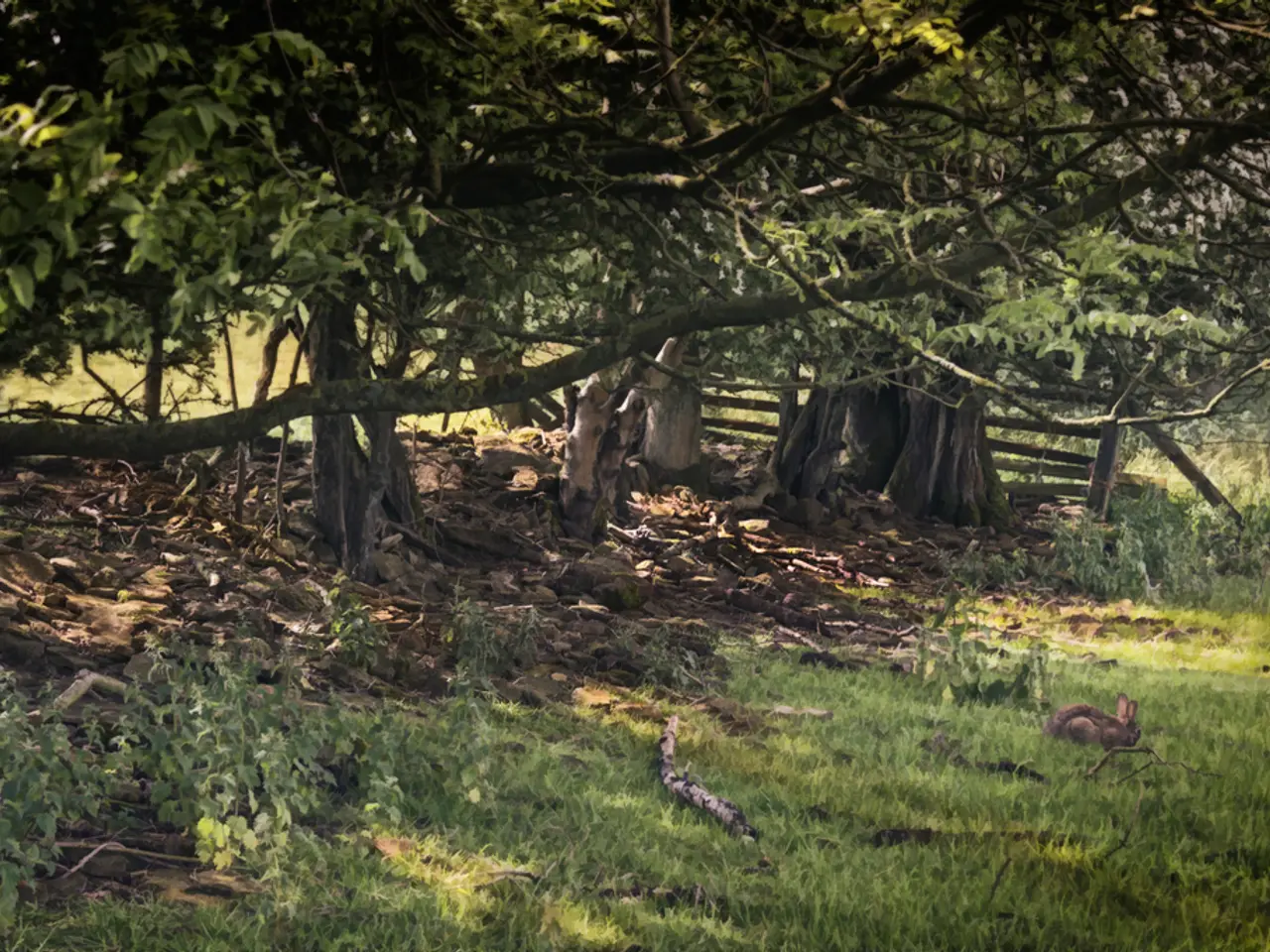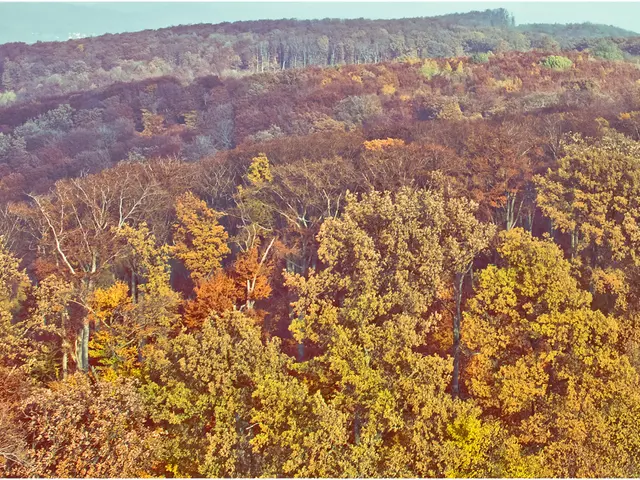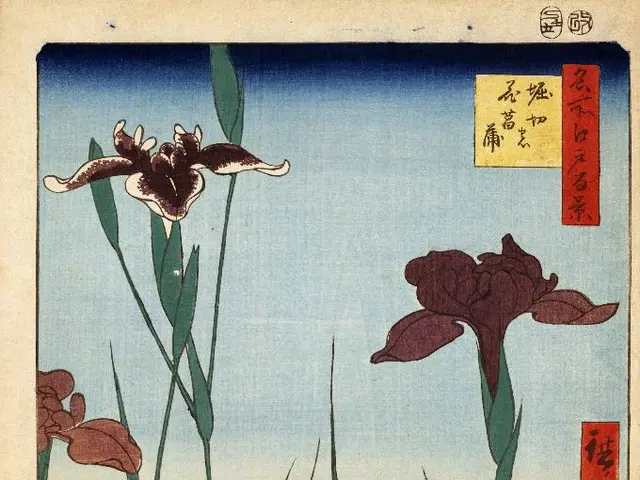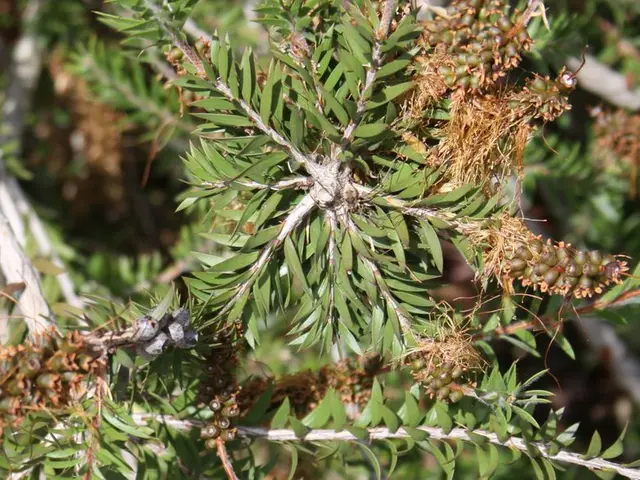Maintaining the Optimal Appearance of Mature Landscaping: Proven Advice for Long-Standing Gardens by Our Landscape Experts
Fancy Garden Makeover: Caring for an Established Garden
- From Overgrown to Provenance
- Garden of a Different Age
- Learn the Art of Patience
- Embrace Weeds and Mulch
- Keep 'em Trim & Fertile
- Strategize with Perennials
- Lush, Green Grass Forever
- FAQ
Is taming an already established garden a daunting task? Not a chance! Here's the lowdown on turning an older garden into something you can proudly call your own.
What's a Mature Garden?
The term 'mature' doesn't have a definitive definition when it comes to gardens, but generally speaking, it refers to a garden that's survived for quite a few years. The plants have reached their full potential and occupied their spaces snugly. Mature gardens can range from overgrown jungles to meticulously maintained masterpieces.
So, while some gardens may look well-loved and cared for, others may need a lot of work. The beauty of it all? Both can be transformed into beautiful, thriving gardens that bring happiness and a sense of peace to their keepers.
Taming the Old Garden - A Step-by-Step Guide
Even an overgrown garden can be turned into a lovingly nurtured landscape. Here are tips for working with a mature garden and renovating it to your liking:
Patience is a Virtue
If you inherit an apparently wild and overgrown garden, don't jump right in with a shovel. Take a moment to soak it all in, to observe the plants, and learn their quirks. Wait a year to see how the garden evolves throughout the seasons before making any big changes.
Weeds and Mulch - BFFs
One of the most tedious tasks involved with maintaining a mature garden is continual weeding. Without it, however, weeds can eat up valuable nutrients meant for your garden plants. They can also encourage plant diseases. To keep the weeds at bay, pull them out by hand whenever you see them, especially when the soil is moist.
Mulching your garden beds is also essential to combat weeds and retain soil moisture. A layer of mulch preserves the soil's nutrients and helps block out sunlight that might encourage pesky weed seeds to germinate.
Prune & Fertilize - Keep 'em Beautiful
To keep your beautiful garden full of vibrant flowers, vegetables, and healthy trees, regular pruning is needed. Digging into your plants' history and understanding each variety's needs will allow you to prune carefully and effectively.
Fertilizing is essential to maintain healthy garden plants. Make sure to use organic fertilizers to encourage healthy soil structure and avoid chemicals that could potentially harm your plants. Some plants, like vegetable gardens, need special fertilizers and a crop rotation plan to ensure their continued success.
Perennials - Loyal Companions
Taking care of perennials is like tending to a long-term relationship. They can provide you with years, if not decades, of loyalty if given the proper care. Each perennial has specific needs, but a general rule of thumb is to avoid over-fertilizing them and avoid damaging their delicate roots during care.
Lifting and dividing your perennials every three to four years helps them grow strong and healthy. Composting should be added to the soil at this time as well, and fresh mulch can be added yearly.
Turf Grass - The Emerald Carpet
Taking care of your turf grass is of the utmost importance to keep your garden looking beautiful. Aerating the lawn once a year helps loosen the soil, introduce oxygen to the grass roots, and create an environment for healthy grass growth. Re-seeding in the fall helps fill in any sparse areas and ensure your lawn remains thick and lush.
FAQ
How many years does it take for a garden to reach maturity?
Garden maturity is not a hard and fast rule. Some gardens may take a few years to reach maturity, while others may take ten or more. It all depends on the unique factors at play, such as plant variety, soil health, and climate conditions.
How do you make your garden look older?
To make your garden look older and more established, embrace the natural aesthetic. Plant perennials and layered shrubs instead of annuals that produce bright, flashy colors. Let certain plants grow wild or add vines and creepers for a more natural, untamed look. You can also integrate hardscaping elements, such as stones and benches, to create a sense of age and history.
- To enhance your home-and-garden lifestyle, consider transforming your mature garden, giving it a new lease on life as a lovingly nurtured landscape.
- Gardening doesn't just involve tending to flowers and vegetables; it also involves caring for perennials, which can be loyal companions for years, providing a sense of continuity akin to a long-term relationship.








